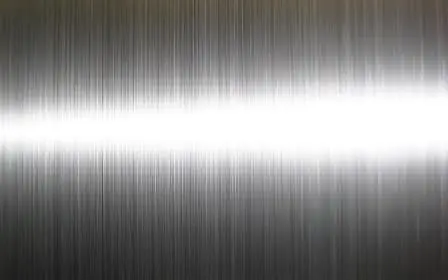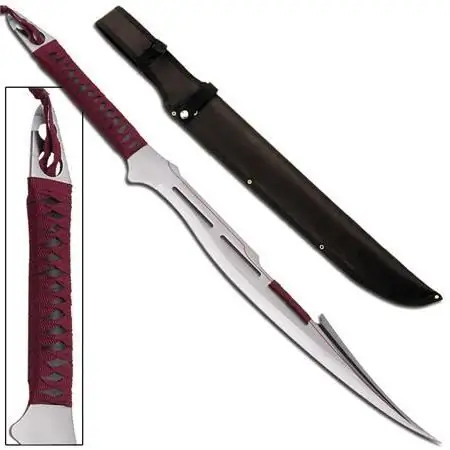2025 Author: Howard Calhoun | [email protected]. Last modified: 2025-06-01 07:12:56
Unfortunately, exploring the vast Internet in search of simple and understandable articles on the topic of metal structures and steels in principle, at best, you will find a couple of unstructured articles that do not make much sense. In other cases, information is provided in the form of simple clippings from regulatory documents, where all information will be given in the form of obscure scientific and technical abbreviations and designations.
This state of affairs does not suit us, therefore, in today's article, we will simply get acquainted with the main characteristics of 40ХН steel as much as possible, and also discuss its scope and chemical composition.
Use

Let's start our excursion with the simplest, namely, with the answer to a rather important question. Where is this steel used or, to paraphrase a little, for which industrycharacteristics of steel 40ХН will be most in demand?
If we refer to the documentation, namely to GOST 4543-71, it will become clear to us that 40ХН steel is structural, alloyed, chromium-nickel. This name makes it clear that this grade of steel is used primarily for the manufacture of something. In most cases, the use of 40XH steel is closely related to the manufacture of parts for various mechanisms.
For example, axles and shafts of engines, gears, rollers, connecting rods, levers and much more are often made from 40XH. All of the above parts are subject to high loads during their entire operation, from which we can conclude that the characteristics and mechanical properties of 40XH steel are not so bad.
However, you should not think that steel of this grade is already produced in the form of finished parts. Like any other steel, 40ХН is supplied to the market in the form of strips, bars, hexagons, squares that are familiar to everyone.
Composition

We are sure: it is no secret for readers that the alloy of iron and carbon is steel. Pure steel, to be exact. However, such material is not always suitable for use. It is in order to improve the initial properties of steel that various elements from the well-known periodic table are added to its composition, the presence of which in the composition in a certain proportion endows the alloy with certain properties such as increased wear resistance and oxidation resistance.
Steel 40ХН was no exception, the characteristics of whichdirectly follow from the ligature composition, which looks like this:
- 0, 4% carbon;
- 0, 6% chromium;
- 0, 65% manganese;
- 0.27% silicon;
- 1, 2% nickel;
- 0, 3% copper.
Alas, the smelting technology cannot guarantee the complete absence of harmful impurities in the composition of 40XH steel. Characteristics due to their presence do not deteriorate significantly, since the percentage of such impurities does not exceed 0.035%.

Steel 40ХН: characteristics
The use of 40KhN steel as a material for the manufacture of heavily loaded parts of mechanisms is the clearest indicator that the alloy has sufficiently high strength indicators. And this is certainly true. Most of the master alloy in the composition increases the strength characteristics of 40ХН steel, such as wear resistance, impact strength, ductility, resistance to elevated temperatures, and also makes it more resistant to corrosion.
Analogues
As usual, almost any steel - tool, construction or structural - will always have several analogues or substitutes both within the manufacturing country and abroad.
Let's start with domestic steels. Among the similar ones were:
- 40X.
- 35HGF.
- 50xn.
- 30XGWT.
But in foreign markets you can find something similar. For example:
- United States of America - 3135 or 3140N.
- Japan -SNC236.
- China - 40CrNi.
- Germany - 1.5710 or 40NiCr6.
Well, now you know much more about 40XH steel, its inherent characteristics, and applications. We hope you found this article helpful.
Recommended:
Food stainless steel: GOST. How to identify food grade stainless steel? What is the difference between food stainless steel and technical stainless steel?

The article talks about grades of food grade stainless steel. Read how to distinguish food stainless steel from technical
Corrosion resistant steel. Steel grades: GOST. Stainless steel - price

Why metal materials break down. What are corrosion-resistant steels and alloys. Chemical composition and classification according to the type of stainless steel microstructure. Factors affecting pricing. Steel grade designation system (GOST requirements). Application area
Steel R18: GOST, characteristics, forging and analogues

Every person, even the most distant from the industry, at least out of the corner of his ear heard about the outstanding properties of P18 high speed steel. It is rumored to be a super-hard alloy capable of cutting, drilling, or otherwise working any other grade of steel. In addition to strength characteristics, high-speed 18th steel is highly valued by blacksmiths, manufacturers of household knives and edged weapons. Did P18 steel deserve such an attitude or not? You will learn about this from the article
Steel 20X13: characteristics, application and analogues

This article is a brief description of all the features of steel 20X13: characteristics, application, properties, substitutes and foreign analogues. This article will be useful to those who want to get acquainted with the most important information on this topic in a short time without wasting time
440 steel - stainless steel. Steel 440: characteristics

Many people know 440 steel. It has established itself as a reliable, anti-corrosion, time-tested hard material, which is most often used for the manufacture of knives for various purposes. What is the secret of this alloy? What are its chemical, physical characteristics and applications?

